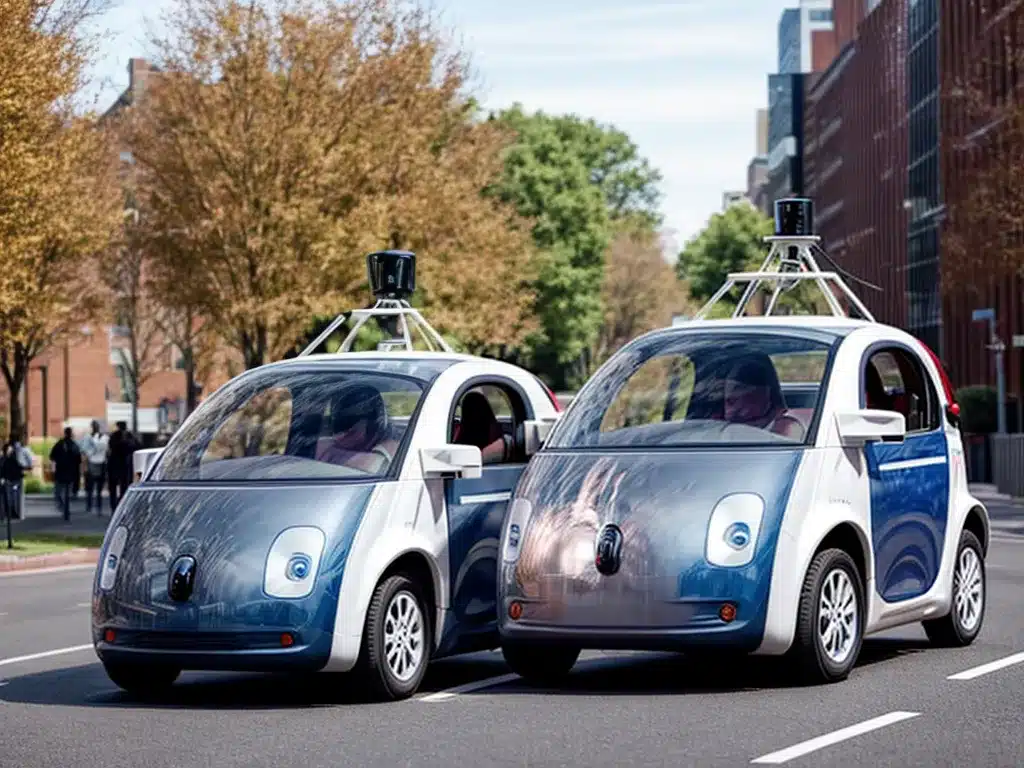
Introduction
Self-driving cars have come a long way in recent years thanks to advances in artificial intelligence and sensor technology. As a leader in autonomous vehicle development, Google’s self-driving car project, now known as Waymo, has made significant progress. In this article, I will provide an in-depth look at Waymo’s latest self-driving cars and evaluate how good they really are.
A Brief History of Waymo’s Self-Driving Car Project
Google first started developing self-driving car technology in 2009. The project was led by Sebastian Thrun, who headed Google’s artificial intelligence lab at the time. Their first prototype used sensors like LIDAR and radar to map the environment and make navigation decisions.
In 2012, Google’s test fleet of autonomous vehicles had already logged over 300,000 miles of driving. This demonstrated that self-driving cars could handle complex environments like freeways, city streets, and even driving in traffic. However, a human safety driver was still required behind the wheel at all times.
In 2016, Google’s self-driving car project was spun out into a new company called Waymo. This allowed them to focus exclusively on bringing autonomous vehicle technology to market. Since then, Waymo has continued to refine its self-driving system and has run over 20 million miles of real-world testing.
Waymo’s Latest Vehicle – The Chrysler Pacifica Minivan
Waymo has been using Chrysler Pacifica minivans as its primary test vehicle since 2016. The Pacifica provides a roomy, practical platform for Waymo’s self-driving system.
The minivans are equipped with a suite of sensors including cameras, LIDAR, and radar. These sensors provide a 360-degree view around the vehicle. Powerful onboard computers then interpret this sensory data to understand the environment and make driving decisions.
Waymo’s newest Pacificas feature fifth-generation hardware designed entirely in-house. This includes new perimeter cameras with higher resolution and range, as well as LIDAR sensors with greater performance. These sensors allow Waymo’s self-driving system to see farther and with more detail.
Impressive Capabilities Demonstrated
In controlled testing and limited public trials, Waymo’s latest vehicles have demonstrated some seriously impressive autonomous driving capabilities:
-
High-speed driving – Waymo cars are capable of navigating freeways at 65 mph alongside traditional traffic. Their sensors and software allow them to change lanes safely.
-
Unprotected left turns – One of the most complex maneuvers for self-driving cars is unprotected left turns across oncoming traffic. Waymo vehicles can judge gaps in traffic and complete these turns smoothly.
-
Inclement weather – Waymo’s vehicles can handle rain, snow, and fog thanks to sensors like LIDAR that aren’t hindered by poor visibility. Their systems are trained with extensive real-world driving data.
-
Minimal driver interventions – During testing in Arizona, Waymo’s vehicles have gone thousands of miles at a time with no interventions from a human safety driver. This demonstrates their systems are reliable and don’t require human takeover in most situations.
What Experts Are Saying
Industry experts seem impressed with the progress Waymo has made so far:
“Waymo is far ahead of the pack,” says Mike Ramsey, automotive analyst at Gartner. “They’ve driven so many more miles than anyone else.”
“It may take several years before fully autonomous vehicles arrive in volume,” says Sam Abuelsamid, analyst at Guidehouse Insights. “But Waymo is at the forefront of making this a reality.”
“Waymo’s technical prowess has never been in doubt,” says Bryant Walker Smith, law professor at the University of South Carolina. “Their continued real-world testing demonstrates that their system keeps getting better.”
Public Perception and Remaining Challenges
Despite impressive demonstrations, Waymo must continue gaining public trust:
-
Perceptions of safety – A 2021 survey showed 71% of consumers are still concerned about fully driverless cars. Waymo needs to prove their safety record over billions more miles.
-
Falling costs – Bringing their vehicles to market depends on continued reductions in sensor and compute costs. Their systems still rely on expensive components.
-
New scenarios – For full autonomy, Waymo’s cars will need to handle unfamiliar roads, extreme weather, construction zones and more. Expanding geographic and environmental testing remains critical.
-
Regulations – Laws allowing autonomous vehicles to operate are still evolving. Waymo will need to work closely with regulators as they plan wider service deployment.
My Take – Cautious Optimism
Overall, I’m cautiously optimistic about the progress Waymo has made. Their latest vehicles appear to be highly capable and have impressive self-driving abilities. Waymo is doing extensive real-world testing to handle an ever-wider range of scenarios.
However, bringing fully autonomous vehicles to market remains incredibly complex. There are still technology and cost challenges to overcome. Plus, earning public trust will require billions more miles driven with minimal interventions.
Waymo does seem uniquely positioned to solve these challenges in the coming years. But for now, it’s too early to say their self-driving cars are ready for widespread adoption. As more pilot programs roll out, we’ll get a better sense of just how good Waymo’s technology is and when fully autonomous vehicles may become a reality on our streets.












